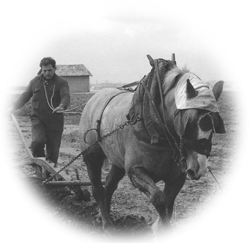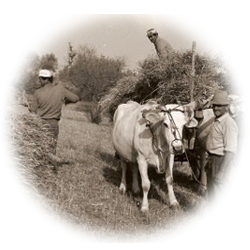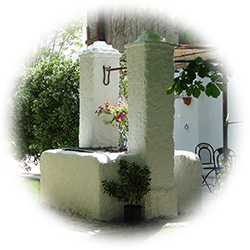In 1850, the women used to go to the well and get water with special characteristics, used in the preparation of the “brod ad fasò” (beans soup); and in the old bakery, a bread so natural that it lasted for the whole week was baked.
In the courtyard, corn and hemp were left to dry, and in the summer night, people danced to the sound of a handle organ. In the cowshed, the animals, which toiled in the fields during the day, ruminated slowly.
The “pusiòn” (the farm), was divided into “braglini”, each demarcated by fruit trees, mulberry and hawthorn bushes, and cultivated by the tenant farmer. In the big colonic house five families lived together.
Long after those days, the descendants of the land owners have decided to revive the place, restoring the house and warehouse (around 380 square meters), maintaining the ancient structure but equipping it with all modern technologies. On the flagstone paved courtyard it is still possible to dance the evenings; the ancient restored well lives its function by providing water for the garden.
The “braglini” have been substituted by wheat and corn plantations, but in the park of nearly 5000 square meters, the jujube, the oak, the pomegranate tree, etc. still adorn this beautiful place.




